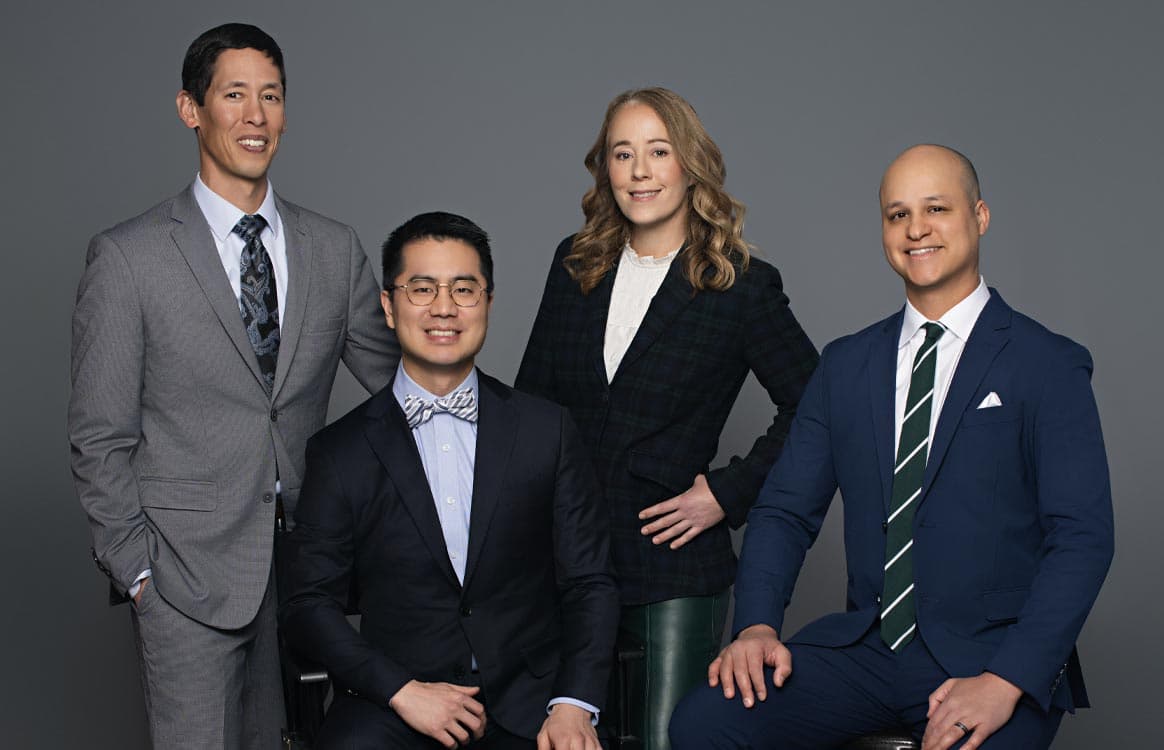Plastic Surgeons of Alaska
Alaska Regional Hospital
301 West Northern Lights Blvd, Suite 110
Anchorage, AK 99503
Phone: (907) 563-2002
Fax: (907) 562-7628
Monday–Friday: 8:30 a.m.–4:30 p.m.
Technique #2: Tissue Expander With Implant
To schedule an appointment, please call (907) 563-2002 today.
Placement of a Tissue Expander for Breast Reconstruction
This technique attempts to overcome the limits of Implant Only Reconstruction by covering the implant with a complete layer of chest wall muscle.
Requirements for Tissue Expander with Implant Breast Reconstruction
When the skin and muscle on the chest wall is inadequate in extent to allow placement of an implant directly, this skin can be expanded to allow placement of a larger implant. This technique starts with a FIRST OPERATION at which time a TISSUE EXPANDER (an empty balloon) is placed beneath the skin and muscle. Over several weeks, a series of injections expands that balloon and the overlying skin and muscle. At a SECOND OPERATION the temporary expanding device is removed and a permanent prosthesis similar to that described in the prior technique is placed. If you have not reviewed that section pertaining to implants and their limitations, please do so now. Placement of an empty devise allows the maintaining of the muscle attachments and eventually the complete
Tissue Expander
Following placement of the expander and after a short healing period, the in-office expansion injections can be started. This is accomplished by localizing the metal backed injection port and adding a volume of antibiotic solution and saline to the expander. This is usually done weekly and may take 6-8 weeks depending on the total volume to be injected.
During this filling time, you can resume normal activities depending on your overall recovery.
Once expanded to the desired volume, the skin and muscle must have a period of time to stretch and overcome the natural tendency to contract to the previous state. This may take 2-3 months.
Breast Implant
After this time, a second surgery will be needed to remove the tissue expander as it is only a temporary device. A permanent implant of either saline or silicone gel will then be placed. The result should be an implant with complete muscle coverage with a size and shape comparable to you other breast.

Meet Our Surgeons
Our surgeons are uniquely talented and share a dedication to providing our patients the type of personalized care that has established Plastic Surgeons of Alaska as the premier practice in the state.
Request My ConsultationAdvantages and Disadvantages of Breast Reconstruction with Tissue Expander and Breast Implant
Advantages
The advantages of complete coverage by muscle are many. There is less visible wrinkling due to the additional thickness of the muscle layer. There is less tendency to develop capsular contracture which may distort the breast and make it feel hard or firm. There is less tendency to have the foreign body (expander) become exposed if there should be delayed skin healing. This makes immediate reconstruction safer and more predictable.
Other features of this operation include the fact that both operations are relatively short (1.5 hours) and can be done as day surgery or with one night in the hospital if done at the time of the initial mastectomy.
Recovery is likewise shorter than the more involved procedures and most women are back to work in a couple of weeks and returning to full activity in 3-4 weeks.
The expander and subsequent permanent implant can be placed through the mastectomy wound/scar making the need for additional incisions unnecessary. This single scar enables the skin color, texture and sensation to assume almost a normal quality with time. This is a good procedure for bilateral reconstruction
Disadvantages
The disadvantages of this operation include the obvious need for an implant and the associated potential problems with any implant or foreign material. These also include:
- Premature leakage of the expander prior to complete filling
- The shape of the breast is more hemispherical and often has fullness in the upper portion of the breast mound
- Long treatment time which may approach 6 months
- Poor results in women who have received radiation to the chest wall as part of their cancer treatment. This is due to the scarring and fibrosis caused by radiation.
If chemotherapy is needed during the reconstructive phase of the treatment, the second operation will be delayed until the chemo is finished and you have recovered to allow better healing from the second operation.
This operation is best applied to patients with small frame size and smaller, less ptotic (droopy) breasts. It also is a good bilateral technique.
